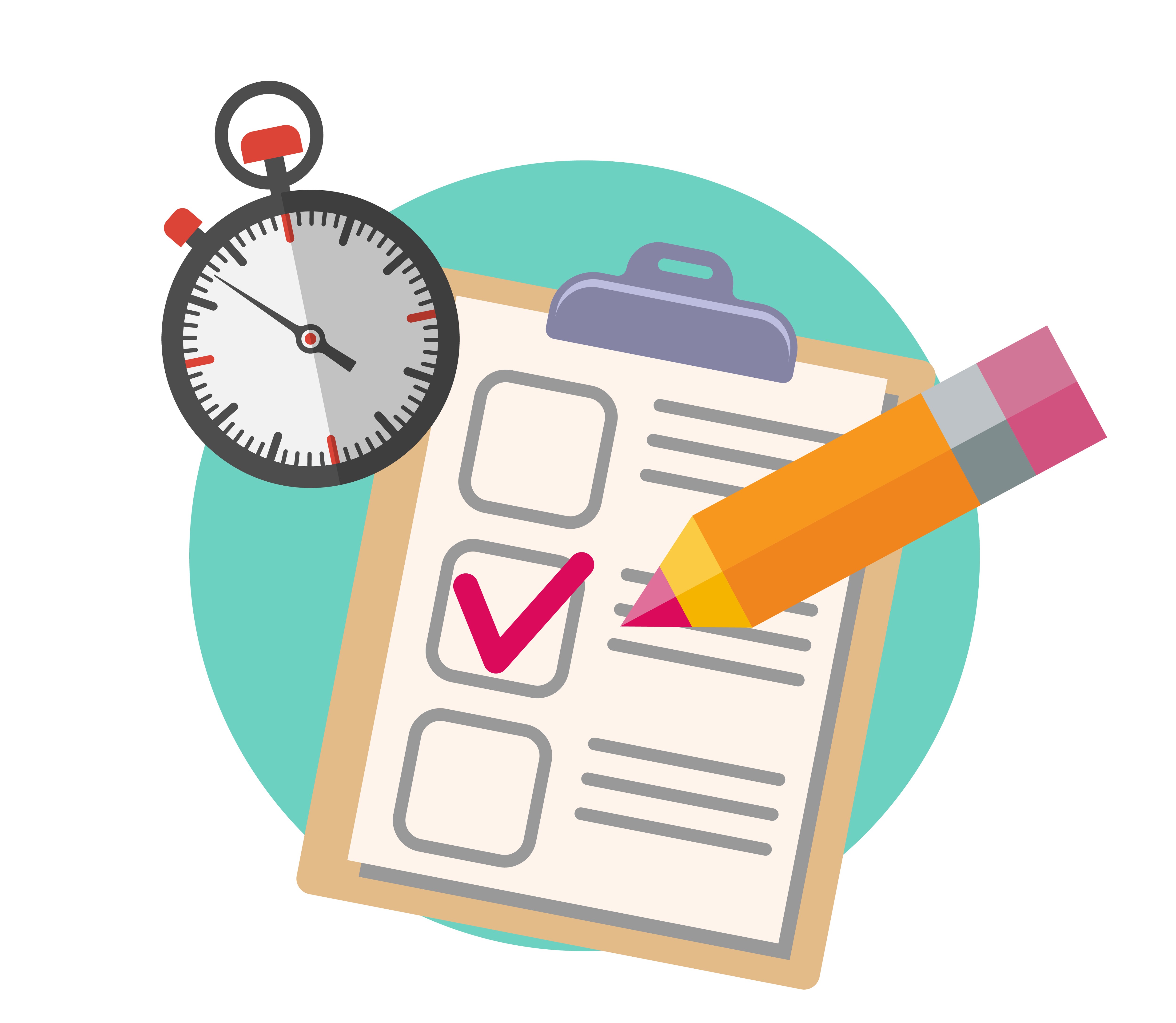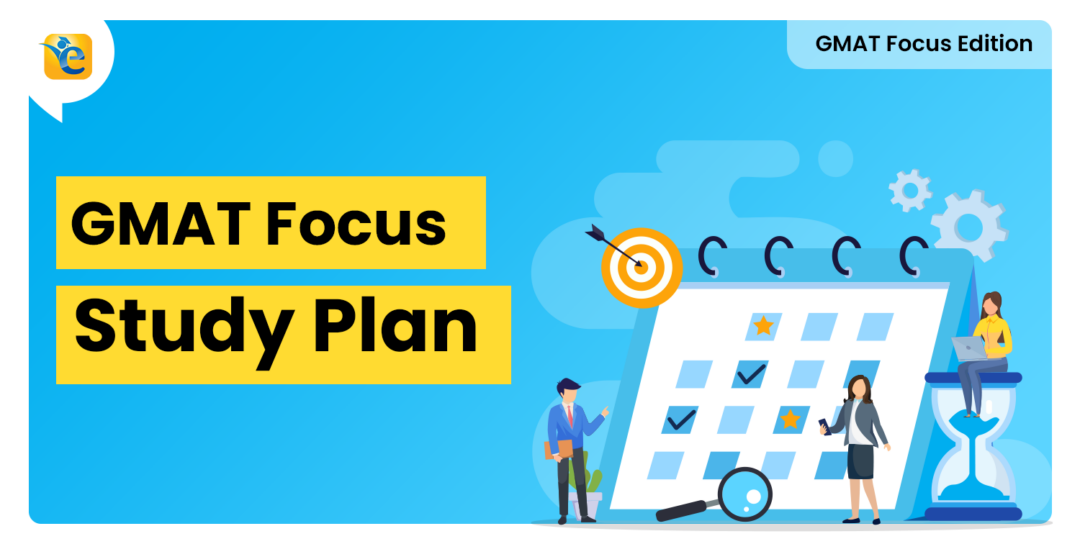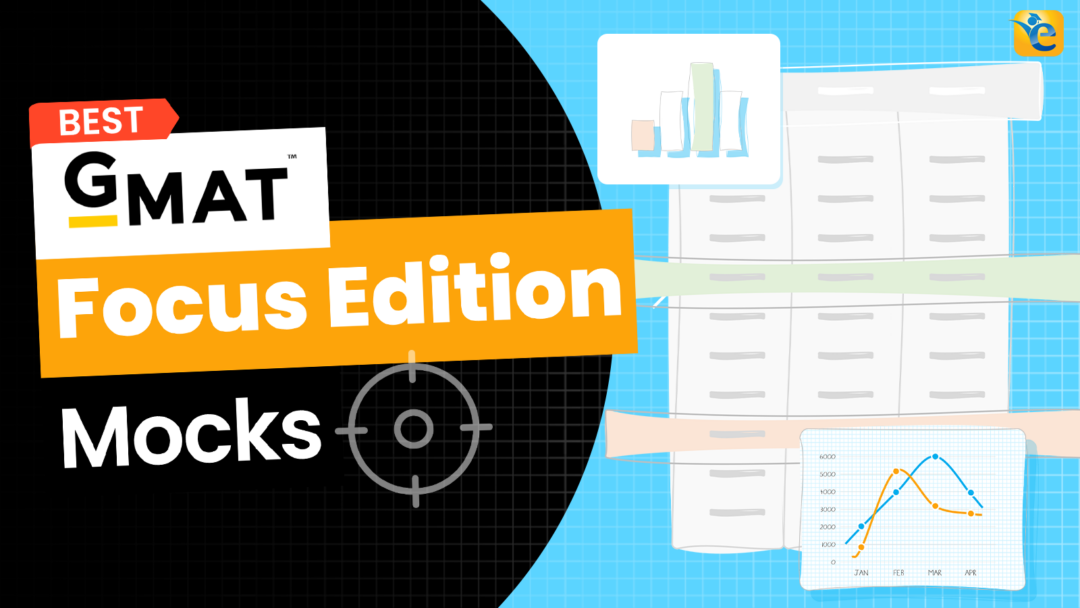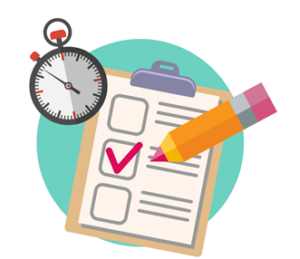In the realm of business education, the Graduate Management Admission Test (GMAT) stands as a pivotal assessment tool, integral to the admissions process of numerous prestigious business schools globally. The GMAT exam is used by more than 2,400 universities and institutions in 114 countries with testing in over 600 test centers around the world and serves as a barometer for evaluating potential students’ suitability for the business school.

The test’s format has evolved over the years, reflecting the changing landscape of business education and the skills deemed essential for future business leaders. The introduction of the GMAT Focus Edition on Nov 2023 is a testament to this evolution. This edition streamlines the exam, reducing its sections and total duration while maintaining its rigorous standards.
The GMAT Focus Edition offers a scoring range from 205 to 805. Annually, over 200,000 individuals take the GMAT, yet only a small fraction, approximately 6%, achieve a score of GMAT Focus 665 or higher. These statistics underscore the exam’s challenging nature, confirming that the GMAT is indeed demanding, particularly for those aiming for a score above 665.
This article delves into the specifics of what makes the GMAT a challenging exam and explores the factors that contribute to its reputation as a difficult test to master.
Want to know where you stand on the GMAT? Take our free mock test and discover how hard is the GMAT for you. Get valuable insights into your performance, identify your strengths and weaknesses, and make an informed decision about your preparation path.
Exam Structure and Content
GMAT Focus Edition
November 2023 marks the advent of the GMAT Focus Edition. This revamped version streamlines the test into three sections: Quantitative Reasoning, Verbal Reasoning, and Data Insights, reducing the overall test duration to 2 hours and 15 minutes. This shift reflects a more targeted approach toward evaluating skills pertinent to modern business challenges.

What Does “Hard” Truly Mean in the GMAT Context?
When discussing the difficulty of the GMAT, it’s essential to delve beyond the surface-level understanding of ‘hard.’ The GMAT’s challenge lies in a unique blend of factors that go beyond mere academic knowledge. It tests a range of skills that are crucial for success in business school and beyond.
The Time Investment Challenge
One of the primary dimensions of the GMAT’s difficulty is the significant time investment required for preparation. Unlike exams that purely test knowledge, the GMAT assesses problem-solving skills, critical thinking, and the ability to apply concepts in different scenarios. This requires not only a thorough understanding of the material but also extensive practice to master the exam’s format and question types. Candidates often spend months preparing, balancing this with other commitments, which adds to the perceived difficulty.
Broadening Knowledge: Understanding GMAT’s Content
The GMAT covers a wide range of content, especially in quantitative and verbal reasoning. While the quantitative section demands a strong grasp of basic math concepts like algebra and arithmetic, the verbal section tests complex comprehension and reasoning skills in the English language. For many, especially non-native English speakers, this can pose a significant challenge. Familiarity with the content is not just about knowing the concepts but also about understanding how they are applied in the context of the test.
The GMAT Focus Edition introduces a pivotal new section: Data Insights (DI). As this section is new, its evolving nature adds an element of unpredictability, requiring test-takers to be adaptable and well-prepared for a variety of data analysis scenarios. The DI section is not just a test of quantitative skills but also of critical thinking and strategic decision-making, making it a challenging yet essential component of the GMAT Focus Edition.
Here is a link to an article that will help you with all the information on Data Insights section.
Beyond Memorization: The Demand for Deep Application
The depth of application required in the GMAT is another aspect that contributes to its difficulty. It’s not enough to simply know the right formulas or grammar rules; success on the GMAT depends on how well one can apply this knowledge in solving complex problems under time constraints. The test demands high-level reasoning, critical analysis, and the ability to discern and manipulate information quickly and accurately.
Psychological Factors
Finally, the ‘hardness’ of the GMAT is also influenced by psychological factors. Test anxiety, the pressure of high stakes (as GMAT scores are crucial for business school admissions), and the stamina required to maintain focus throughout the test add to its difficulty. Overcoming these psychological barriers is as important as mastering the content and strategies for the test.
Click here to know if the GMAT Focus is Harder or easier.
Key Features of GMAT
1) Computer Adaptive Test:
The GMAT is a Computer Adaptive Test (CAT), meaning the difficulty of the test adapts in real time to the test-taker’s performance. Each question’s difficulty is based on the accuracy of previous answers. This adaptive nature makes the GMAT a highly personalized exam, ensuring that it accurately measures a candidate’s abilities. This feature also implies that no two GMAT exams are the same, adding a unique challenge to each test-taking experience.
One of the notable new features of the GMAT Focus Edition is the ability for test-takers to revisit and change their answers to up to three questions per section. This feature presents a significant shift from the traditional GMAT format, where answers, once submitted, could not be revised.
The ability to review and change answers introduces a complex strategic element to the test. On one hand, it offers candidates a chance to correct mistakes, potentially improving their scores. However, this feature also adds a layer of decision-making complexity. Test-takers must not only be confident in their knowledge and answers but also astute in determining which answers to review and change. This process requires additional time management and can introduce a psychological element, as candidates might second-guess their initial instincts or spend valuable time deliberating over which answers to revisit.

We invite you to read our GMAT Focus Edition Series Articles, an invaluable resource to keep you at the forefront of your GMAT preparation journey.
2) Timing Pressure:
The GMAT is as much a test of time management as it is of knowledge and skills. The total duration of the GMAT Focus Edition is approximately 2 hours and 15 minutes, with each section having strict time limits. This aspect of the exam requires candidates to not only be proficient in the subject matter but also to be quick and efficient in their problem-solving approach. Managing time effectively while maintaining accuracy is a key challenge for most test-takers.

3) Format
The GMAT Focus Edition has streamlined the exam into three main sections:
- Quantitative Reasoning: With 21 questions, it tests mathematical skills and problem-solving abilities.
- Verbal Reasoning: Comprising 23 questions, it assesses comprehension, critical reasoning, and command of standard English language.
- Data Insights: A new section with 20 questions, specifically designed to test data analysis and interpretation skills in a business context.
Each section in the Focus Edition is allotted 45 minutes, highlighting the GMAC’s emphasis on depth of understanding and efficiency.

Read this article to learn about the GMAT Focus Edition Syllabus.
How to Conquer the GMAT?
Mastering the GMAT requires more than just understanding the content; it’s about developing a comprehensive strategy that encompasses various aspects of preparation. Here are key steps to help you conquer the GMAT:
- Knowing the format and pattern of the exam
- Creating and following a personalized study plan
- Choosing the right resources for preparation
- Improving time management on the test
- Beating the test anxiety
- Learning how the analyse the mock tests.
Let’s discuss one by one :
Knowing the Format and Pattern of the Exam
The first step is to become intimately familiar with the exam’s structure. Understand the types of questions asked in each section and how the computer-adaptive nature of the test works. For the GMAT Focus Edition, pay special attention to the new section, Data Insights, and how it differs from the traditional format.
The simplest way to get acquainted with the exam is to take some GMAT practice tests! Here’s how we can help (for free):
GMAT practice tests – Your one-stop solution to getting GMAT ready!
GMAT is the test of your ability – your quantitative ability and your verbal ability – each of which is composed of sub-sectional abilities. When a student begins preparing for GMAT, he/she may very well have different abilities in various sections. So, it is only obvious that each student should have her/his own personal path to the target GMAT score. And to identify one’s starting abilities, what better way to do other than take a GMAT Practice Test!
e-GMAT’s SIGma-X mock test – the only GMAT practice test / mock test in the world that provides key insights that even official mocks do not provide. Not only that – as the student progresses through the personalized charted-out path – SIGma-X mocks provide key insights that enable the student to refine the plan with the aim to reach the target score in the most efficient manner.
NOTE – The first mock test is free. You can take the same from here.
Given below is a list of articles that will enable you to UNDERSTAND SIGma-X mocks so that you can utilize them completely and prepare for GMAT in the most efficient manner – after all, time is the most precious commodity.

Here is the list of articles that you should read. We recommend you read through them in the order in which they are presented below. But feel free to jump around if you want!
Insights from SIGma-X Mocks
- What ability related insights does a SIGma-X mock provide? (with a video explanation)
- How can I use the ability related insights provided by SIGma-X mocks to create my personalized study plan?
- What other factors can impact my performance in SIGma-X mocks?
- What corrective actions do I need to take so that lack of “Warm-Up” does not impact my GMAT score?
- How do I ensure that I do not have any “Missed Opportunities” in the GMAT?
- How can I use insights from SIGma-X mocks to refine my preparation in the later stages of my preparation?
Creating and following a personalized study plan.
Each aspirant has unique strengths and weaknesses. Create a study plan that addresses your specific needs. Allocate more time to areas where you need improvement and maintain your strengths in others. A study plan helps you keep track of your preparation and monitor your progress on the journey to a 645+ GMAT score.
Save 60+ hours on your preparation by crafting an efficient and effective study plan. Watch this video to know more about e-GMAT’s Personalized study planner for GMAT Focus:
Choosing the Right Resources for Preparation
Choosing the right resources for your preparation can make the difference between scoring a 700+ score on your first attempt or retaking the test. Data-driven online courses to reduce preparation time significantly. Read this article on the best GMAT books and resources to help with your decision.

If you are planning to take the exam, we can help you with a personalized study plan and give you access to quality online content to prepare. Write to us at acethegmat@e-gmat.com. We are the most reviewed GMAT prep company on gmatclub with more than 2600 reviews.
Why don’t you take a free trial and judge for yourself?
Improving Time Management on the Test
Practice under timed conditions to get used to the pressure of the exam. Learn to allocate your time effectively across sections and individual questions. Time management is a skill that improves with practice, so make timed drills a regular part of your study regimen.
If you think poor time management is the reason why the GMAT is hard for you then read this article on GMAT time management strategies.
Beating Test Anxiety
High stakes and the challenging nature of the GMAT can lead to significant test anxiety. Develop techniques to manage stress, such as mindfulness, deep breathing, or positive visualization. Being mentally prepared is just as important as being conceptually prepared.

Learning How to Analyse Mock Tests
Mock tests are not just for practice; they are a tool for analysis. After each mock test, spend time reviewing your answers, especially the ones you got wrong. Understand why you made mistakes, and use these insights to further improve your accuracy.
The best way to understand the GMAT exam format is by trying the test out for yourself. Try Free GFE Mock now.
We have provided a clear and concise comparison of GMAT Focus Mocks and explained the mocks algorithm.
Conclusion
We hope this article helps allay your fears about the difficulty of the GMAT and gives you the insights required to answer the question, “How hard is the GMAT?”. In case of any other queries related to GMAT preparation and strategy, please write to us at acethegmat@e-gmat.com.
Want to know where you stand on the GMAT? Take our free mock test and discover how hard is the GMAT for you. Get valuable insights into your performance, identify your strengths and weaknesses, and make an informed decision about your preparation path. Don’t miss this opportunity to start your MBA journey on the right foot. Take the test today!
FAQs :
How to create a GMAT Study Plan?
Here are the 5 steps to create your GMAT Study Plan:
1. Decide on your target Quant and Verbal Scores
2. Estimate the amount of time you need
3. Create the sequence of study
4. Follow a structured approach to study for your target score
5. Take mock tests & review your preparation
Here’s a detailed article explaining each step on how to create your personalized GMAT Study Plan!
Are there any GMAT preparation best practices to follow?
Yes, there are. Here are the 6 GMAT preparation best practices for 2024-25:
1. Know all about the GMAT exam
2. Look for the Best GMAT preparation resources
3. Have a personalized study plan
4. Follow sub-section strategies
5. Learn the concepts right and then practice questions
6. Follow Exam day test strategies
Read in detail about these best practices here.
How much time does it take to prepare for the GMAT?
It depends on your current level and what is your target score. Ideally, it would take 3-4 months to prepare well for the GMAT. Ashray scored a GMAT 760 with just 20 days of preparation. While Dhananjay, who worked 60+ hours a week full-time, needed 18 months to prepare and score the same. Learn more
What is the GMAT Syllabus? What topics are asked on the GMAT?
The GMAT Syllabus comprises topics that are further grouped into sub-sections and sections. It consists of three sections:
1. Verbal
2. Quant
3. DI
Read this article to learn about the GMAT Focus Edition Syllabus.









